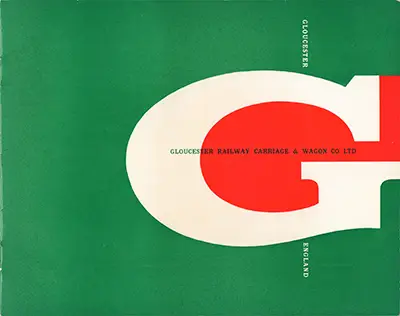Class 100 Gloucester RC&W 2-car DMUs
Background
After authorising railcars for a few smaller isolated schemes the British Transport Commission made the decision in 1954 to introduce as many DMUs as fast as it could. It asked each Region to look at what routes would benefit best from DMUs, and it's Works & Equipment Committee also looked at how fast the new vehicles could be built. It seems the biggest factor was that the main engine & transmission supplier - British United Traction (BUT) - could only supply 20 sets of equipment each week, enough for 10 power cars. Another issue was that the railway's own workshops could not build that many vehicles each week, and so private builders were asked to tender for the work, providing prices for 10, 20 or 50 vehicles and an indication of expected delivery dates.
The GRC&W tender had quoted prices of £20,811, £19,843 or £19,300 for power cars weighing 30.5 tons based on 10, 20 or 50 orders, likewise the 23.5 ton trailer were to be £14,671, £13,723 or £13,186.
Knowing that these contractor built vehicles required the power train & control equipment from BUT, the W&E Committee worked out a three year schedule balancing the anticipated delivery dates from builders and it's own capacity allowing it to submit a request to the BTC for the funding. It wanted to build a further 1,408 vehicles (in addition to the 232 that had previously been approved) consisting of 858 power cars and 550 trailers. The 2nd December 1954 proposal was approved at the BTC meeting on 16th December 1954 at a cost of £17,570,000.
The builders that were given orders from this were Metropolitan-Cammell (339 vehicles), Birmingham Railway Carriage & Wagon (393 vehicles), Cravens Ltd (72 vehicles), British United Traction - as Park Royal - (40 vehicles), D Wickham & Co (10 vehicles) and Gloucester Railway Carriage & Wagon (40 vehicles).
The British Transport Commission placed the order with the company on March 4th 1955, and all were initially allocated to the Manchester (London Road) No.1 scheme, with the "estimated dates of delivery on promises made at date of tender being commencing on 1st August 1956 and being complete on 10th November 1956" (delays to the placement of the actual order saw this slip).
They were designed and built in collaboration with the Transport Sales Dept. of T.I. (Group Services) Ltd. In the time between the sets being authorised for the Manchester Scheme in December 1954 and their delivery in mid-'57 plans changed. The Diesel Light Weight Trains Committee meeting on the 12th March 1957 approved that nine sets be re-allocated to Scotland once the Park Royal sets arrived in Manchester.
Batch Two
A second order had been placed on the 30th January 1957 for a further twenty sets for the Edinburgh area of the ScR, following successful trials with 79xxx series Met-Camms in the Edinburgh area. The two batches were built consecutively and delivered between May 1957 and May 1958.
Exhibition
Gloucester RC&W invited visitors, including representatives of British and overseas railways, to the works on 19 July 1957 where they saw vehicles in all stages of construction, as well as the finished product.
A brochure was produced for the event full of information about the vehicles.
Download PDF (4mb)

Summary
Orders
Construction
Description
GRC&W Ads & Works Pictures
BR Diagrams & Works Pics
Numbering & Driving Instructions
Liveries
Allocations
Operations - LMR
Operations - Scotland
Operations - NER/ER
Publicity - ScR Newspaper Ads
Non-Passenger Use
Fisons Weedkiller
Images
Also relevant:-
Edinburgh Suburban timetables
Details about the preserved Class 100 vehicles can be found here.


